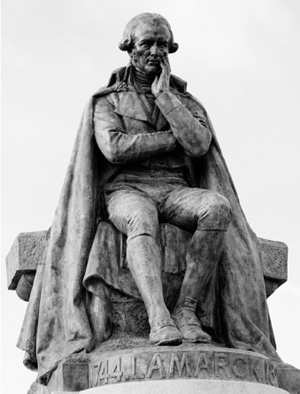Heredity, Natural Selection, and EvolutionHighlights of Evolution |
Who disproved Lamarck’s theory? |
In the 1880s, the German biologist August Weismann (1834–1914) formulated the germ-plasm theory of inheritance. Weis-mann reasoned that reproductive cells (germ cells) were separate from the functional body cells (soma or somatic cells). Therefore, changes to the soma would not affect the germ-plasm and would not be passed on to the offspring. In order to prove that the disuse or loss of somatic structures would not affect the subsequent offspring, Weismann removed the tails of mice and then allowed them to breed. After twenty generations of this experimental protocol, he found that mice still grew tails of the same length as those who had never been manipulated. This not only disproved Lamarck’s theory of use and disuse, it also increased understanding of the new field of genetics.

A bronze statue of French biologist Jean-Baptiste de Lamarck can be seen at the Jardin des Plantes botanical garden in Paris, France.
